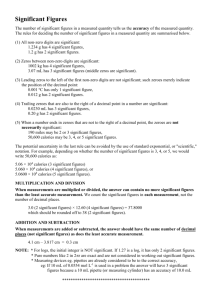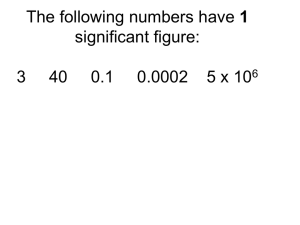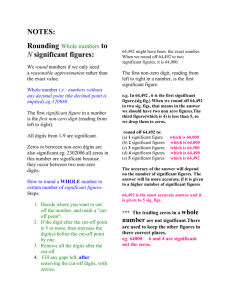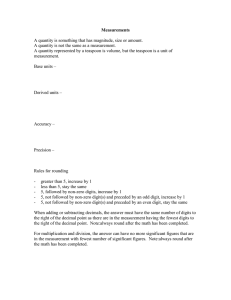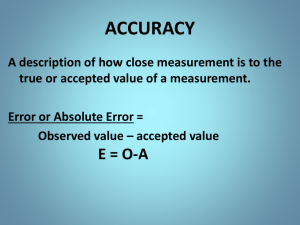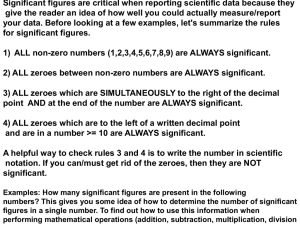SIGNIFICANT FIGURE RULES: Measurement Rule: Write down all
advertisement
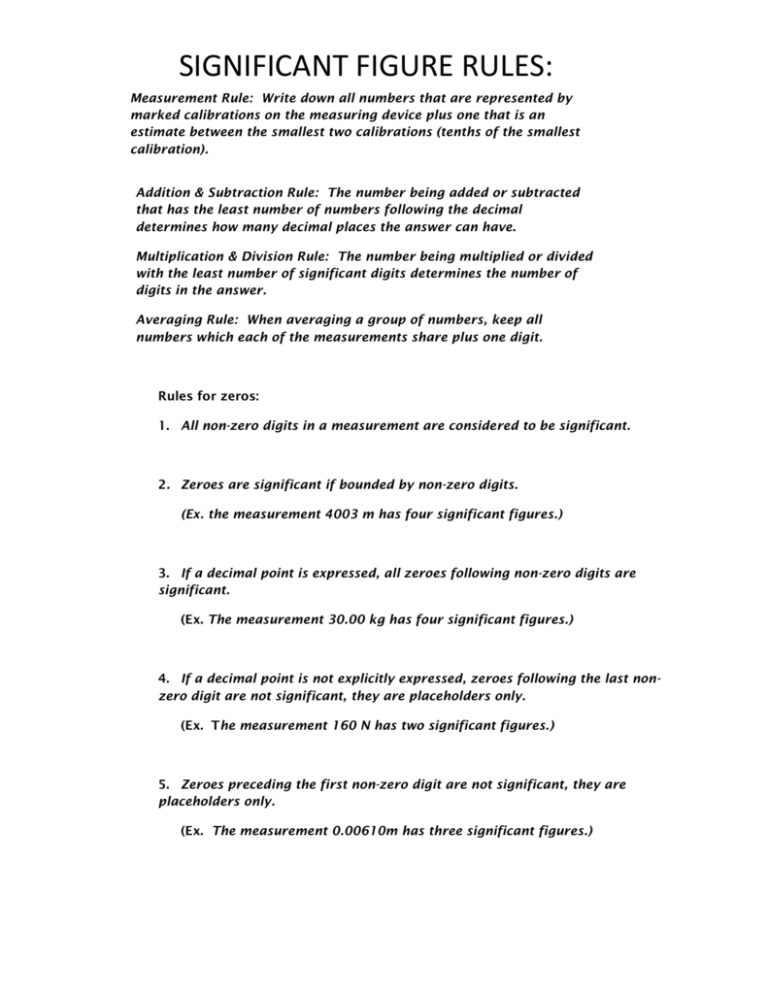
SIGNIFICANT FIGURE RULES: Measurement Rule: Write down all numbers that are represented by marked calibrations on the measuring device plus one that is an estimate between the smallest two calibrations (tenths of the smallest calibration). Addition & Subtraction Rule: The number being added or subtracted that has the least number of numbers following the decimal determines how many decimal places the answer can have. Multiplication & Division Rule: The number being multiplied or divided with the least number of significant digits determines the number of digits in the answer. Averaging Rule: When averaging a group of numbers, keep all numbers which each of the measurements share plus one digit. Rules for zeros: 1. All non-zero digits in a measurement are considered to be significant. 2. Zeroes are significant if bounded by non-zero digits. (Ex. the measurement 4003 m has four significant figures.) 3. If a decimal point is expressed, all zeroes following non-zero digits are significant. (Ex. The measurement 30.00 kg has four significant figures.) 4. If a decimal point is not explicitly expressed, zeroes following the last nonzero digit are not significant, they are placeholders only. (Ex. The measurement 160 N has two significant figures.) 5. Zeroes preceding the first non-zero digit are not significant, they are placeholders only. (Ex. The measurement 0.00610m has three significant figures.)
